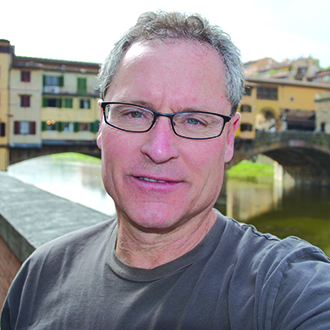Ah, the Loire Valley: I’ve heard many appreciative comments about the region.
And over the years, I have met many winemakers and winery owners from the Loire and tasted many of their wines. In the 1970s, I had served Vouvray and Sancerre, two of the Loire Valley’s signature wines, in my first restaurant job but didn’t give them much thought. Now, however, I’ve returned from a whirlwind Cliff Notes tour of the valley and have a firsthand perspective.
The Loire River enabled relatively easy access from Paris to the countryside, making the Loire Valley the perfect retreat for royalty and the aristocracy. The lush countryside delights but then you go around a corner and get gobsmacked by the sight of a castle, with turrets, spires, defensive garrisons, gardens and dungeons, dating back many centuries. The region boasts 300 châteaux and more than 4,000 wineries.
We spent two full days and part of a couple of others in Central Loire near Saumur, residing at the Royal Abbey of Fontevraud. This is a UNESCO World Heritage Site that, by itself, was well worth the transatlantic flight. Originally constructed around the year 1100, it remained a deeply religious community, replete with cathedrals, cloisters, gardens and vineyards, until the French Revolution when it was plundered and then became, of all things, France’s harshest prison for a couple of centuries.
We also visited one privately owned castle, circa 1054, known as the Château de Brissac, owned by Charles-Andre de Cossé-Brissac, the Marquis of Brissac, with a promotion to the title of duc (duke) in his future. A guided 90-minute tour and wine-tasting will cost 10 euro, or $11. The Marquis told us, “The Loire Valley is quite simply the most versatile winemaking region in all of France and, quite possibly, the world.” The Loire is the second largest sparkling wine production region in France. It’s the second largest producer of Rosé AOC-certified wines and the third largest AOC winemaking region in all of France, contributing 380 million bottles per year to worldwide consumption. These include whites, Rosés, reds and sparkling wines all over the dry/sweet continuum.
From an oenological standpoint, the area is challenged by the colder northern weather, sometimes not allowing for full ripening and saturation of the fruit. The whites, the Rosés and the sparklers do just fine as chaptalization is allowed. Chaptalization is adding small amounts of sugar during fermentation, which would have been produced by the grape with a longer growing season, to get wine of proper heft and alcohol. In the past the reds have been fresh and fruity, ready to drink when bottled. The Loire producers are now growing and harvesting red grapes from Pinot Noir, Cabernet Franc, Cabernet Sauvignon, Gamay and Malbec, known locally as Cot. And as they do in Bordeaux, they will blend individually vinified grape types until they have a wine of style and substance.
The terroir remains special. The Loire River runs east to west, spilling into the Atlantic well north of Bordeaux. The Loire and its many tributaries create weather pockets of comfort to vineyards all over the region. And the soil is perfect for creating wines of structure and flavor, beyond the typical fruit flavors. The regional soil consists of volcanic rock, gneiss, granite, schist, chalk and limestone and each of these will impart that certain je ne sais quoi to the wine. It is not a regional propensity to use much oak for aging. Some producers use none. Some employ the judicious use of oak for balance and structure but rarely flavor. And some really good news: It would be difficult to find a wine costing more than $50.
The wines near the Atlantic tend to be exclusively white, usually made from Muscadet, an easy drinking wine perfect for virtually any seafood pairing. As you move inland toward the east, white wines made of Chenin Blanc will be found and Rosés become part of every winery’s inventory. Farther west and south of Paris, we find reds made mostly of the aforementioned varietals. These are carefully crafted wines that can be opened young but patience will be rewarded.
We listened to one presenter of Loire Valley wines who summed up the region thusly, “In the Loire you will find wines of fruit, fresh and elegant. Loire Valley offers red wines from the freshest, fruity expression of the grape to more mature, nuanced wines with depths of flavors. We do not like oaky dominant wines. And in the Loire we speak ze purest, unadulterated French. We have no accents here,” he told us in his heavily accented French.
For your next event, pick up a Muscadet from Nantes, a Chenin Blanc from Savennières, a Rosé from Anjou, a couple of sparklers from Saumur and a red or two from Champigny or Chinon. Throw in a sweet wine from virtually any Loire producer, and you have a party.
For more, visit loirevalleywine.com. And write me at doug@dougpaulding.com.


